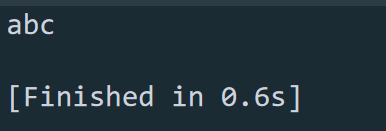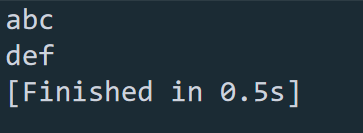一、打开文件、关闭文件操作
想要读取文件或是写入文件,第一步便是打开文件,最后一步便是关闭文件。这里介绍两种打开(关闭)文件的方式:
1、open()方法
f=open(file_name[,access_mode][,buffering])
f=close()
其中,file_name代表文件名,若文件在同一路径下直接输入文件名+后缀,不在同一路径下则写出具体路径;access_mode代表打开文件的方式,默认为r只读模式;buffering代表寄存。
文件的打开方式有如下几种:
r:只读模式
w:用新内容覆盖原文件内容,当文件不存在时,该方式会自动创建文件
a:在原文件中继续写入数据
r+可读可写
w+:打开一个文件用于读写。如果该文件已存在则将其覆盖。如果该文件不存在,创建新文件。
a+:打开一个文件用于读写。如果该文件已存在,文件指针将会放在文件的结尾。文件打开时会是追加模式。如果该文件不存在,创建新文件用于读写。
rb wb ab 读写二进制
若想向文本中写入数据,更改代码如下:
f=open("seed.txt","w") f=close()
需要注意的是,open()方法必须和close()一起使用,打开文件使用完毕后一定要关闭文件。
2、with open() as方法
with open("seed.txt","r",encoding="utf-8"): #encoding为编码格式,此处为utf8格式 ...... #文件操作
该方法会自动关闭文件,以防止出现操作复杂,编写时间久导致遗落文件关闭步骤的情况,个人更推荐在使用文本时使用该方法操作。
二、读取文件操作
1、read()
读取文件所有内容,以字符串形式返回。
with open('seed.txt','r',encoding='utf-8') as f: print(f.read())

2、readline()
读取文件中的一行,读取后,文件指针自动移至下一行开头,以字符串形式返回。
with open('seed.txt','r',encoding='utf-8') as f: print(f.readline())

3、readlines()
读取文件的每一行,以列表形式返回。
这个函数是以内部循环调用readline()方法实现的。
with open('seed.txt','r',encoding='utf-8') as f: for i in f.readlines(): print(i,end='') print() print(type(f.readlines()))

三、常规写入文件操作
1、write(str)
将str写入文件中,默认不换行,换行需手动添加‘ ’。
添加换行符‘ ’:
s='abcd efgh' with open('seed.txt','w+',encoding='utf-8') as f: f.write(s) with open('seed.txt','r',encoding='utf-8') as f: for i in f.readlines(): print(i,end='') print()

不添加换行符:
s='abcdefgh' with open('seed.txt','w+',encoding='utf-8') as f: f.write(s) with open('seed.txt','r',encoding='utf-8') as f: for i in f.readlines(): print(i,end='') print()

2、writelines(seq)
将seq(序列)中的数据多行一次写入文件中,不会自动换行,需手动添加换行符。
手动添加换行符‘ ’:
s=['abc def'] with open('seed.txt','w+',encoding='utf-8') as f: f.writelines(s) with open('seed.txt','r',encoding='utf-8') as f: for i in f.readlines(): print(i,end='') print()

不添加换行符:
s=['abcdef','qwe'] with open('seed.txt','w+',encoding='utf-8') as f: f.writelines(s) with open('seed.txt','r',encoding='utf-8') as f: for i in f.readlines(): print(i,end='') print()

四、指定读取写入文件操作
1、seek(size)
文件指针指向size字节处,并从此处读取或写入数据。
写入数据:
s='abcdefgh' b='123' with open('seed.txt','w+',encoding='utf-8') as f: f.write(s) f.seek(3) f.write(b) with open('seed.txt','r',encoding='utf-8') as f: print(f.readline()) print()

读取数据(文件接上一个例子):
with open('seed.txt','r',encoding='utf-8') as f: f.seek(2) print(f.readline()) f.seek(0) print(f.readline()) f.seek(6) print(f.readline())
